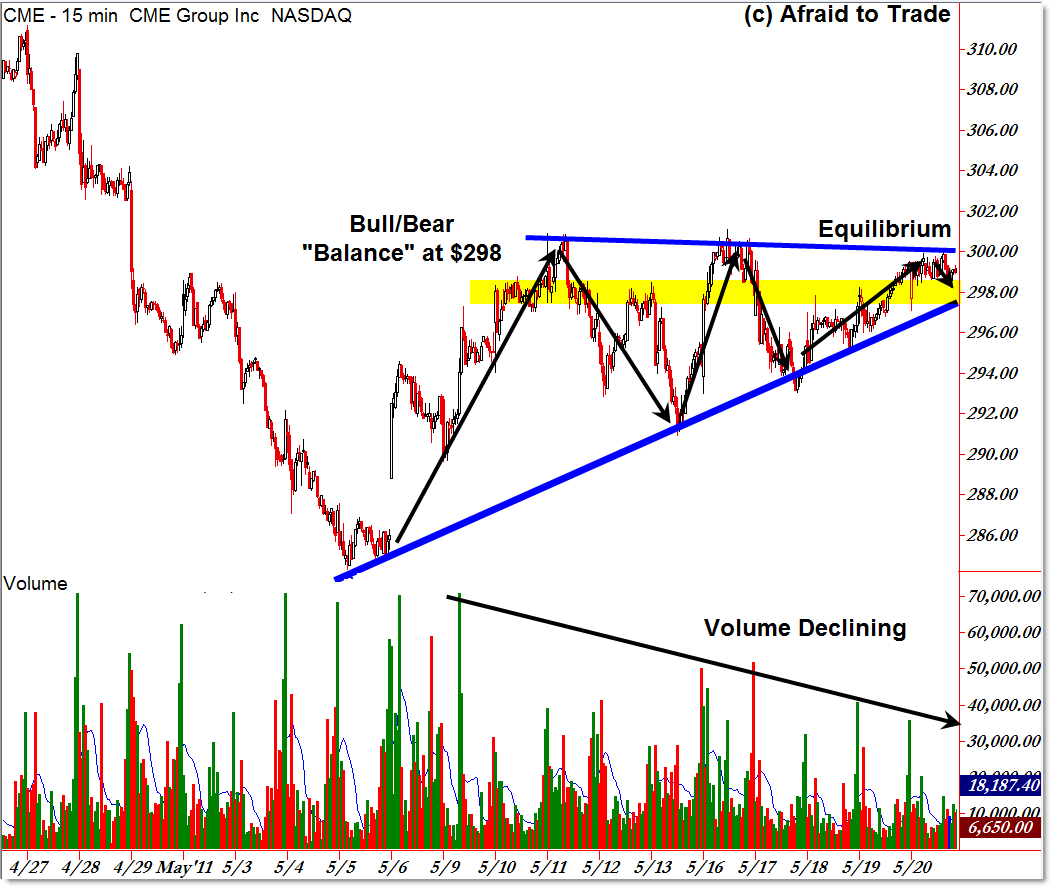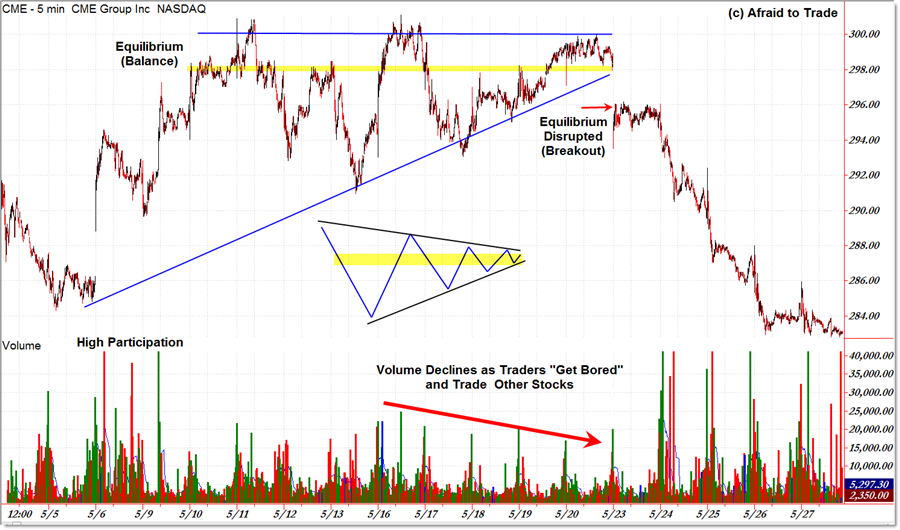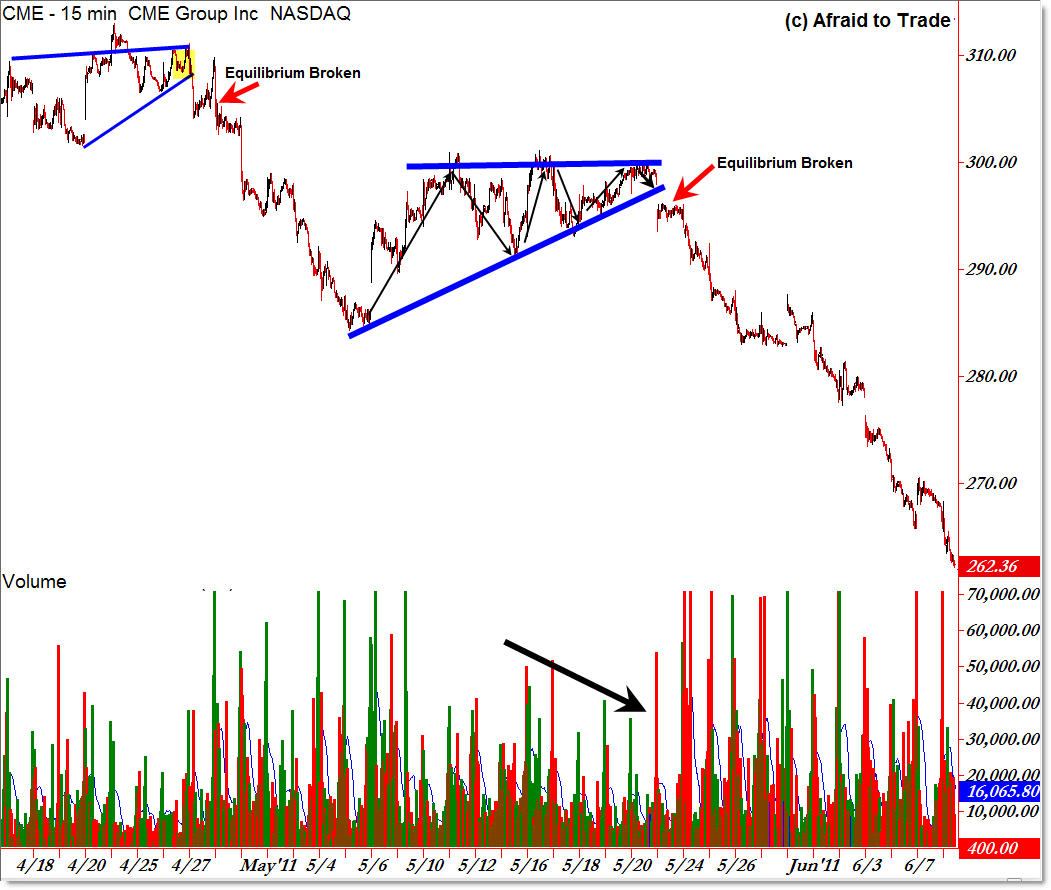Wednesdays with Wyckoff: Trading in Dull Markets and Breakouts
It’s time for another update in the new series “Wednesday with Wyckoff,” where I take a brief idea from the writings of Richard Wyckoff and apply it to today’s markets.
Last week’s entry was a lesson – with colorful imagery – on a stock breaking through a resistance level.
Today’s topic is on “Trading in Dull, Flat Markets,” as Wyckoff introduces us to what we know today as the “Range Alternation” Principle.
From his Studies in Tape Reading, Wyckoff writes:
“Many traders regard a dull market as a calamity. They claim: “Our hands are tied! [We can do nothing].”
“As a matter of fact, dull markets offer innumerable opportunities and we only have to dig beneath the crust of prejudice to find them.”
“Dullness in the market or any special stock means that the forces capable of influencing it in either an upward or a downward direction have temporarily come to a balance.”
“The best illustration for that is a clock which is about to run down – its pendulum gradually decreases the width of its swings until it comes to a complete standstill.”
“These dull periods occur most frequently after a season of delirious activity on the bull side.”
“So with these intervals of market rest… the market becomes neglected [as traders turn elsewhere and] extreme dullness sets in.”
“When prices are stationary, we know that from this point [of balance], there will be a pronounced swing in one direction or the other.”
Wyckoff introduces us to the factors of how a ‘wild’ or volatile market thus winds down to an equilibrium (or balance) level between buyers and sellers, and in this time, many traders get bored and look elsewhere for other opportunities.
However, once the balance is disrupted, one side of the market gets squeezed as the other jumps in, creating a breakout or range expansion move.
This type of logic then gives rise to breakout trading strategies – markets in clear equilibrium tend to eject in an impulse move OUT of that stable condition.
Here, let’s take a look at a recent example in CME Group (CME):
We see CME Group on the 15-min intraday frame from late April to late May 2011.
After an initial impulsive (range expansion/trend) move down from $310 to $286 per share, buyers step back in and are met by sellers at the $300 level. Throughout May, buyers and sellers come into balance – or equilibrium – just under $300 per share.
Here we see the Range Alternation Principle (Chapter 3 in the Trading Course Book) at work – markets (price) alternate between periods of range expansion and range contraction.
Notice how traders – at least as seen through volume/participation – got “bored” of this consolidation/contraction action and then likely went off to trade other stocks as the swings narrowed in range.
We call this pattern today an “Ascending Triangle,” but in truth, it’s best to see it simply as a “Range Contraction” phase when buyers and sellers – like the pendulum on a wind-up click – slowly narrows its swings until the pendulum stops.
Of course, traders can identify the boundaries in real time as the consolidation develops and then play long and short into resistance and support, or they can wait for a better opportunity as Wyckoff suggests – the inevitable Range Breakout (or Range Expansion) phase.
I drew the compression phase beneath the price to clarify the example.
We see now the consolidation or range contraction phase that gave way to a Range Breakout/Expansion phase in late May which resulted in a move from $296 back to $283 per share in a multi-day impulsive (trending) decline.
Intraday traders had opportunities to short rallies in the context of this higher timeframe (multi-day) range consolidation period (“Dull Market”).
Notice how volume was high on the initial rally in early May, how it declined during the sideways consolidation (dull) phase, and then skyrocketed again (traders jumped back in to play volatility) during the range expansion (breakout) phase.
This is how Breakout Trading logic works, and leave it to Richard Wyckoff once again to give us a great imagery of how this works – wide swings narrow into small swings into balance, only to be thrown “off balance” on the breakout – which leads to a trading opportunity.
Generally the stop can be trailed above the prior swing high in the context of a range breakout/trend/impulse phase, or above respective moving averages like the 50 EMA. Alternately, one can trail a stop above falling hand-drawn trendlines. One generally holds the position – or trades/scalps retracements against the trend – until price breaks through these trendlines, EMAs, or a prior swing high.
Our final image is the complete picture of the Expansion, Contraction, and Expansion phase in CME:
There was a smaller equilibrium (balance) phase in mid-April that gave way to the downward impulse in early May. This downward impulse from $310 to $285 resolved into our contraction phase we saw in the prior two charts. Finally, price ejected (broke free) of the “Value Area” or Equilibrium Price under $300 per share in late May.
Stay tuned as we learn more each Wednesday – especially regarding the interesting imagery in his lessons – from the writings of Richard Wyckoff.
Corey Rosenbloom, CMT
Afraid to Trade.com
Follow Corey on Twitter: http://twitter.com/afraidtotrade
Corey’s new book The Complete Trading Course (Wiley Finance) is now available!




Interesting!
This is the setup I trade most.
This is not Whyckoff, he did not use triangles, patterns. I think you need to read his book, it appears your confusing the concept.